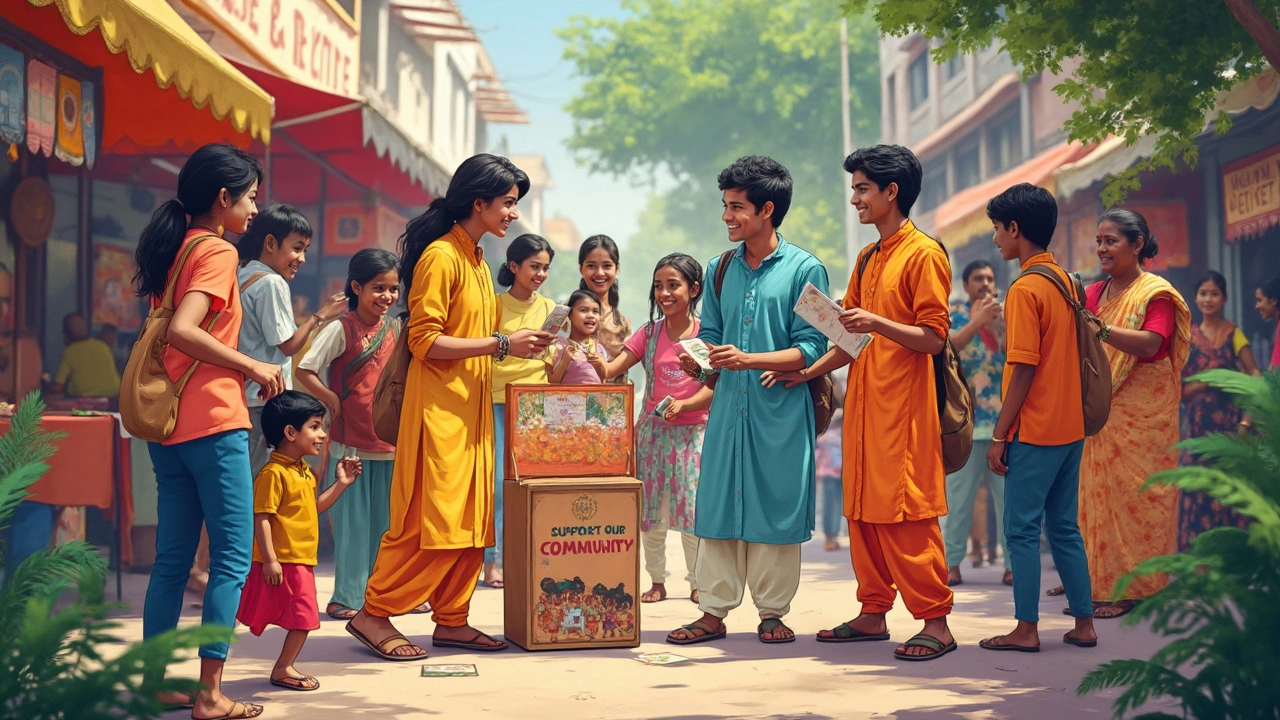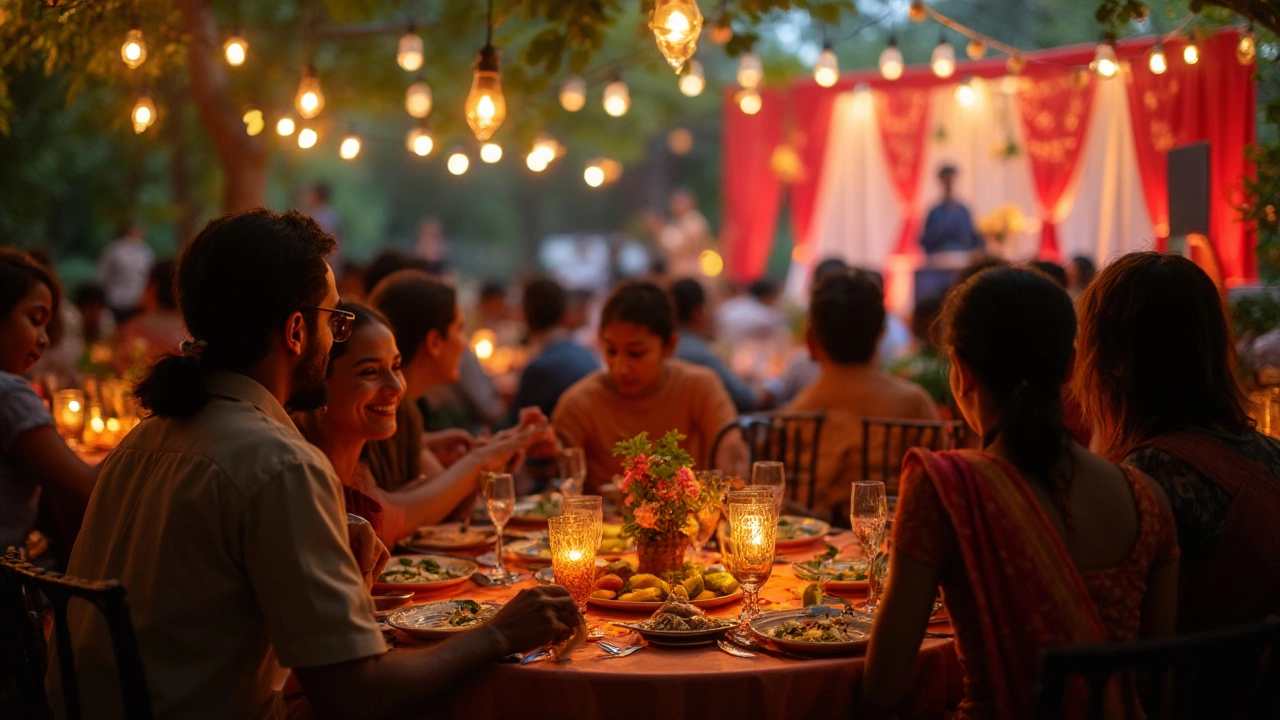Charity events aren't just about dressing up or sharing a nice meal—they have concrete objectives that help drive change. This article breaks down what these events really aim to accomplish, from gathering money and raising awareness to building community. You'll discover practical tips to make charity events more effective and engaging. We’ll even toss in some surprising facts about how small efforts can have a big impact. Whether you're planning your first fundraiser or just curious how these gatherings work, you'll get what you need right here.

- Created by: Lydia Carmichael
- Completed on: 24 Apr 2025
- Categories: Events
Imagine getting an invite to a charity event and wondering, “What’s the point of all this?” It goes way beyond a fancy dinner or some live music. There’s a real goal behind every charity event, even if each one takes a different route to get there. Whether you’re dreaming up an event yourself or just curious what these gatherings actually do, understanding their objectives can make all the difference.
Most people think it’s just about raising cash—and sure, that’s a huge part of it. But charity events also work behind the scenes to shine a light on important issues and help people rally around a cause. They turn regular folks into helpers, even if all they do is buy a ticket or share a post online. That snowball effect? It’s surprisingly powerful when it comes to helping others.
- Why Charity Events Exist
- Raising Funds: The Big Driver
- Spreading Awareness: More Than Just Money
- Community Building: Bringing People Together
- Tips for a Successful Charity Event
Why Charity Events Exist
At first glance, a charity event might look like simply a party or a get-together. But the core reason these events exist is to push real change and make a direct impact. The biggest thing to know? They turn good intentions into actual help—whether that’s meals for families in need, funding for medical research, or playgrounds built in new neighborhoods.
Charity events have a few main jobs:
- Fundraising. This is the obvious one. Most events are set up to collect donations, ticket sales, or sponsorships that go straight to the cause. For example, the American Cancer Society’s Relay for Life has raised billions since it started, all through individual and team fundraising efforts at walk events.
- Getting people to care. Beyond money, charity events shine a spotlight on problems that don’t always get attention. Think about World AIDS Day events that educate people about prevention, or local animal shelter open houses that help animals get adopted.
- Building community. These events give people a reason to show up, support something meaningful, and meet others who care about the same thing. Sometimes, meeting just one passionate person can inspire lifelong involvement.
Across the globe, charity event organizers have seen how public gatherings boost both money and awareness:
| Event Type | Average Funds Raised | Extra Outcomes |
|---|---|---|
| Charity Walks | $20,000 - $200,000 per event | Health Info Spread |
| Benefit Galas | $100,000 - $1,000,000+ | Attract Sponsors |
| Awareness Campaigns | Varies | Media Coverage |
So, when you see a charity event happening, remember: They’re not just raising money, they’re building bridges, growing understanding, and getting people fired up enough to make a difference. Every handshake, every shared story, every dollar—from ticket sales to auctions—serves that deeper purpose.
Raising Funds: The Big Driver
Let’s be real—ask almost anyone in the charity event world why these gatherings happen, and raising money is always at the top of the list. This isn’t just about covering costs; it’s about giving groups the actual resources to get work done. Nonprofits run on donations, and charity events turn a simple ask into an experience people want to be part of.
Some common ways events raise money:
- Ticket sales: Whether it’s a gala, a fun run, or a quirky trivia night, ticket money is where it often starts.
- Auctions and raffles: People love winning stuff (my cousin once “won” an inflatable kayak at a bake sale). Live and silent auctions bring extra excitement and dollar signs.
- Sponsorships: Local businesses chip in for publicity, and it helps cover event costs, making sure more donated cash actually goes where it’s supposed to.
- Peer-to-peer fundraising: Ever get those “sponsor my marathon run” texts? That’s friends raising money for friends. It turns every guest into a mini fundraiser.
Here’s a fun fact: In 2023, just in the U.S., fun runs and charity walks alone pulled in over $2 billion. That’s a lot of sneakers for a good cause. It proves that lots of small donations add up way faster than you think.
| Type of Charity Event | Average Funds Raised (USD) |
|---|---|
| Black Tie Gala | $100,000+ |
| Walk/Run | $30,000 |
| Community Potluck | $8,000 |
| Charity Auction | $50,000 |
The real trick? Making it easy and fun to give. Digital payment tools, text-to-donate, and QR codes right on the event tables work wonders. People are way more likely to chip in when it feels effortless.
So next time you’re at a fundraising dinner, remember: every raffle ticket or silent auction bid is fueling something good behind the scenes.

Spreading Awareness: More Than Just Money
There’s a big difference between asking people for donations and actually helping them understand why your cause matters. That's where spreading awareness at a charity event really kicks in. These events give everyone a chance to learn about the issues up close, not just read about them online or see a quick ad. Sometimes, hearing real stories straight from people who are helped by the charity sticks with folks longer than any donation request ever could.
One thing that’s often overlooked is how much these events boost visibility. Did you know a 2023 survey from Nonprofit Source found that 84% of event attendees say they left with a much better grasp of the cause than before? Even if they’re not pulling out their wallets, what they take home (ideas, awareness, a sense of purpose) can be just as important for the long haul.
Here are some ways a charity event can open eyes and turn bystanders into active supporters:
- Guest speakers with real-life experience—like a cancer survivor at a fundraiser for research—make the problem and the mission feel way more personal.
- Live demos or interactive booths show what the charity really does, which builds trust and excitement.
- Clear visuals and quick stats give guests a reason to care—think posters, videos, and storyboards that explain the problem and how their help matters.
Social media shout-outs make a huge difference, too. Every time someone posts about your event or tags your cause, that’s hundreds (or thousands) more people learning who you are and what you’re up to. It’s not just about money—it’s about making enough noise that people actually notice, remember, and pass the word on.
| Awareness Impact | Estimated Reach After Event |
|---|---|
| Small local event | Up to 2,000 people through social shares |
| Medium city event | 15,000+ |
| Large national event | 100,000+ |
So when you’re planning your next charity event, don’t just focus on raising money. Give guests a reason to care and the tools to keep talking about your cause after they head home.
Community Building: Bringing People Together
People sometimes forget that a charity event isn't just about the fundraising. It's also about getting folks together who care about the same issue. These events let you meet others, swap stories, and sometimes even share a meal or a laugh. When you get that mix of people in the same room, some pretty great things can happen.
There’s real power in numbers. According to a 2023 report by the Giving Institute, events like walkathons and galas increased local volunteer signups by 25% in areas where the events were held regularly. That shows how a charity event can turn guests into long-term supporters or volunteers—not just one-night donors.
Plus, these gatherings make it easier for smaller groups or individuals to connect with bigger organizations. Maybe you’re a high school student looking to help, or maybe you run a local bakery. A charity event brings everyone to the same table—literally, sometimes—so resources, tips, and skills get shared. Think of all those bake sale tables, 5K races, silent auctions, or trivia nights bringing different people together for one reason.
- If you want your event to actually build community, give people space to talk and make plans. Set up networking corners or 'story walls' where folks write what the cause means to them.
- Make sure local organizations or support groups get a spot at the event. This helps them meet interested volunteers or people who might need their help.
- Encourage returning faces each year with little perks like a thanks board filled with names, or a photo booth where you post past event photos. Small things, but it adds up and makes people want to return.
Face-to-face moments can turn a regular fundraiser into something people really care about. The connections made at a charity event stick around longer than most donations.

Tips for a Successful Charity Event
Nailing a charity event usually means juggling a bunch of things without dropping the ball. If your goal is to really make a difference—whether that’s raising money, spreading awareness, or building a better community—it pays to get the small details right. Here are some tried-and-true tips:
- Set a clear goal: Be specific about what you want to achieve. Don’t just say “raise funds”—set a target number or percentage so everyone involved knows when you’ve hit the mark.
- Pick the right format: Not every event needs to be a gala. A small outdoor fair, fun run, or even a virtual trivia night can draw just as much energy. The key is matching the event to your crowd and cause.
- Use personal stories: When people hear about real lives being changed, they open their hearts—and sometimes their wallets. Share honest stories, even if they’re simple. If you can, let someone impacted by your cause speak at the event.
- Promote smart: Don’t just spam everybody with invites. Use social media, email, and good old word of mouth to reach folks who care about your cause. Local press and community boards can work wonders, too.
- Make it easy to give: The fewer hoops people jump through to donate, the better. Have donation stations, QR codes, and online options. If you’re selling tickets, keep the checkout quick and simple.
- Thank everyone: This is huge. People are more likely to support you again if you show appreciation. Send out thank-yous, post shoutouts on social, or even highlight donors at the event itself.
Just to put things in perspective, check out the impact well-done events can have:
| Event Type | Average Funds Raised (US) | Typical Attendance |
|---|---|---|
| Small Community Dinner | $5,000 | 80-150 |
| Walk/Run Events | $15,000 | 300-500 |
| Virtual Auctions | $8,000 | 100-200 |
Bottom line: Focus on your core objective, connect with your supporters, and keep things straightforward. Even a small event, done right, can move the needle way more than you think.
Ever wondered what's the most successful fundraiser in history? Here you’ll get the facts, learn about record-breaking sums, and discover what made a single charity event pull in billions. You’ll also pick up real-life strategies from the world’s fundraising giants. Whether you run a school auction or dream of global impact, this article breaks down what made the top fundraiser work—and how you can borrow those ideas.
This article digs into the world's biggest charity event by size and impact, unraveling what makes it stand out. You'll get some fascinating stories behind these major fundraising moments. Learn which events drew the most attention, money, and people. Discover the practical side of organizing something so massive. If you love seeing good deeds go big, this is for you.

